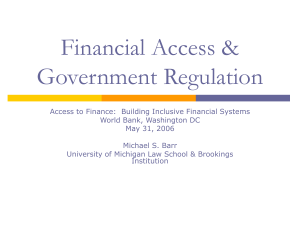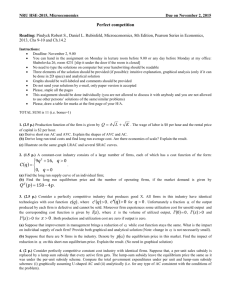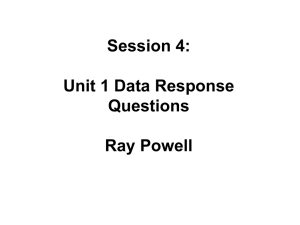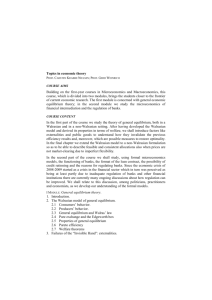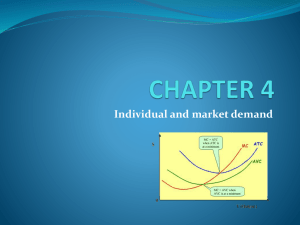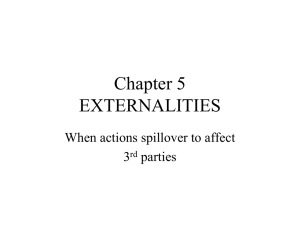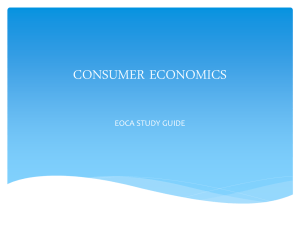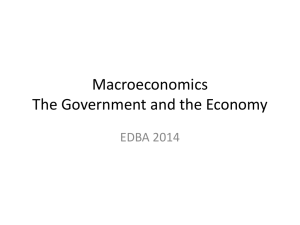Market Failure Diagrams
advertisement
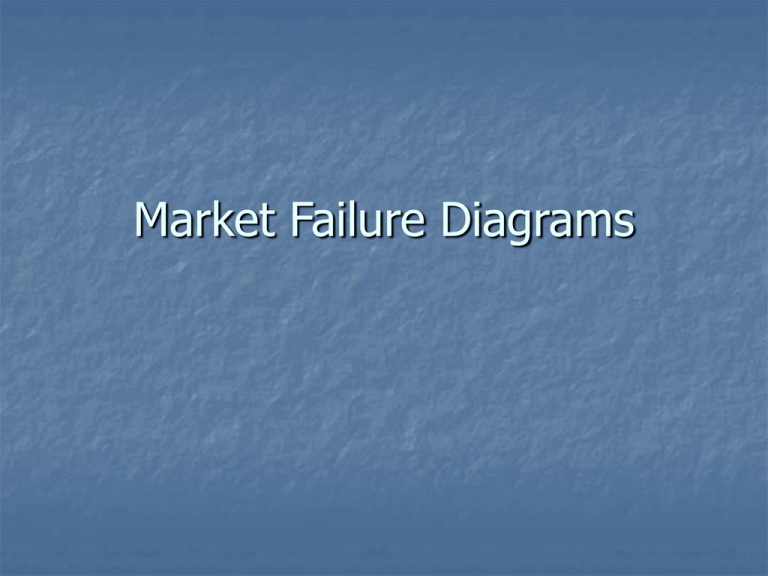
Market Failure Diagrams Market Failure and Merit Goods Price S P2 P1 D2 D1 Q1 Q2 Quantity Under-provision of a merit good Market Failure & Demerit Goods Price S P1 P2 D1 D2 Q2 Q1 Quantity Over-provision of a demerit good Negative Externalities S1 = social costs (private costs + external costs) P S = private costs P1 QePe = free market equilibrium Pe Q1P1 = social optimum D Q1 Qe Q Positive Externalities P S QePe = free market equilibrium P1 Q1P1 = social optimum Pe D1 = social benefits (private benefits + external benefits) D = private benefits Qe Q1 Q Using Taxation to Internalise Negative Externalities S1 = new private costs (initial private costs + tax) P S = private costs P1 Pe QePe = free market equilibrium t Q1P1 = social optimum D Q1 Qe Q Using Subsidy to Internalise Positive Externalities P S S1 = new private costs (initial private costs - subsidy) P1 QePe = free market equilibrium s Pe Q1P1 = social optimum P2 = consumer price P2 D1 = social benefits (private benefits + external benefits) D = private benefits Qe Q1 Q Limitations of taxation & subsidy as a solution to market failure Difficult to determine the correct level of taxation/subsidy (How do we measure the externality?) Effectiveness depends upon elasticity (see next slide) Subsidies require government funding (and higher taxes elsewhere?) Taxation is unpopular (especially in inelastic markets?) Difficult to target on those creating the externality (positive and negative) Costs of collection and enforcement Tax evasion The effects of PED S1 P S1 P S S P1 Pe t P1 Pe t Delastic Dinelastic Q1Qe Price inelastic demand – small change in Q, large change in P Q Q1 Qe Price elastic demand – large change in Q, small change in P Q Imposition of a Minimum Price P S PM PM Pe D QD Qe Excess Supply QS Q Imposition of a Maximum Price P S Pe PM PM D QS Qe Excess Demand QD Q Imposition of a Minimum Wage W S WM WM We D QD Qe QS Excess Supply = Unemployment Q Maximum Prices – Rent Controls Designed to deal with equity and abuse of market power by some landlords Maximum price imposed to make housing more affordable Likely to create excess demand – supply of housing may fall as landlords remove it from the market (selling or leaving them empty) Depends upon elasticity of supply Scarce supply of properties allocated by waiting lists or ‘chance’ Black markets may develop Government may be forced to intervene by providing ‘social’ housing Maximum prices are likely to benefit some but harm others Minimum Prices - Food Designed to provide stable incomes for farmers (equity) and protect strategic supply of food Likely to generate excess supply Government must intervene and buy unsold stocks of food Food ‘mountains’ created – may be ‘dumped’ on third world markets later – undermining local supply (EU solution) Alternative is to destroy the food (US solution) Both methods are expensive for taxpayers Another alternative is to restrict output by paying farmers not to grow crops – ‘set aside’ Less of an issue as we move from food surplus to food shortage? Minimum Wage Designed to: Effect depends upon level at which it is set & the state of the economy If it is set at or below the equilibrium during a period of growth, it will have little or no effect – this is effectively the case in the UK If it is set above the equilibrium it could cause: guarantee a minimum income for low-paid workers (equity) Reduce exploitation by employers (monopsony power) increase supply of workers (labour market failure due to the poverty trap) incentivise employers to increase the quality of labour through training (increase productivity & competitiveness) Unemployment Inflation Reduction in international competitiveness Growth of the black economy May have little effect on the poorest (who are not likely to be in employment) or on relative poverty (as it has no effect on wage differentials)
